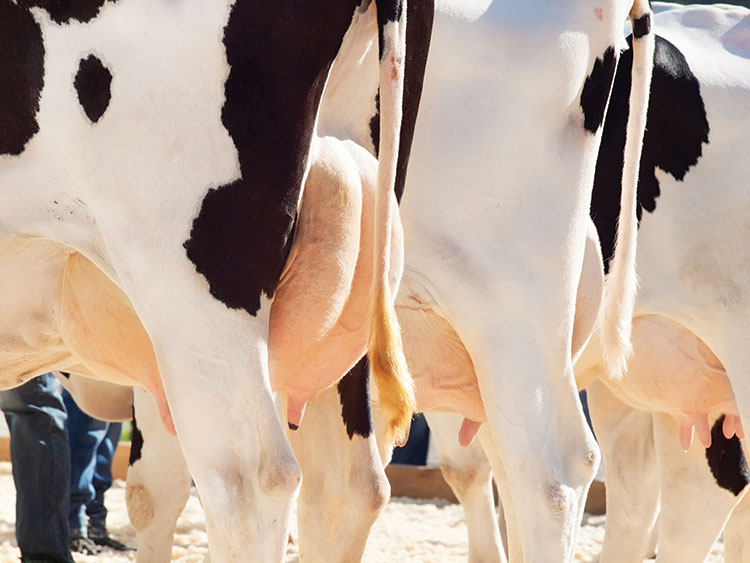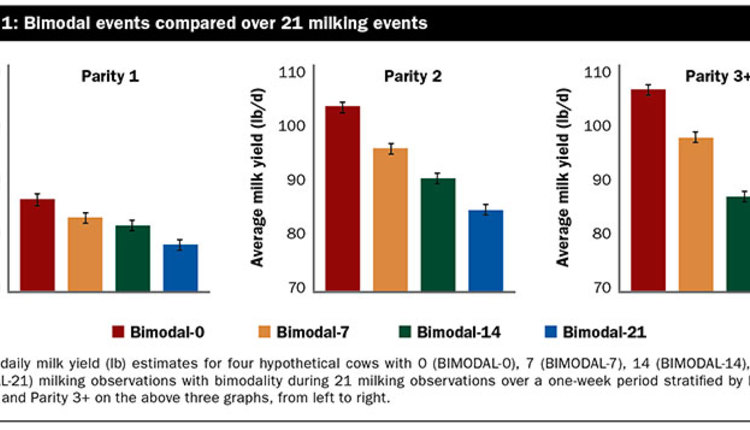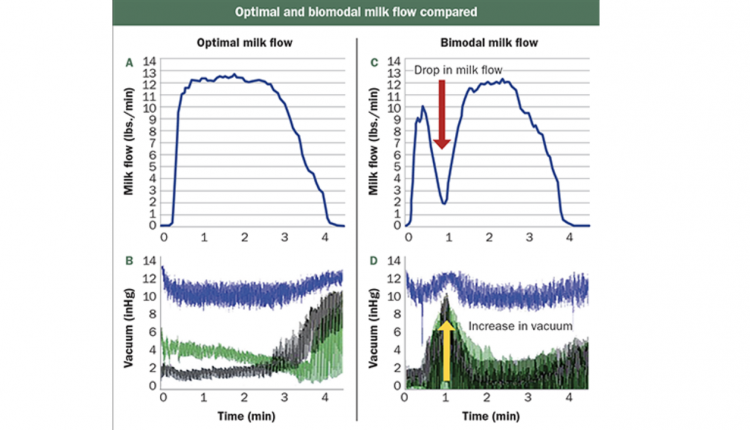The authors are with Quality Milk Production Services, Cornell College of Veterinary Medicine.

Managing mastitis cases based on the causative pathogen can be of economic benefit on well-managed farms while promoting responsible use of antimicrobials at the same time. Diagnostic labs or veterinary clinics can help identify pathogens in milk. However, a large proportion of farms cannot rely on these services because of distance and simply have to perform diagnostics themselves.
On-farm culture systems can be easy to set up and offer results within 18 to 24 hours, making them a convenient choice for some farms. Studies have shown that the use of on-farm culture systems for pathogen-based mastitis management reduced antibiotic use and did not lead to more retreatment or have a negative effect on cure rate and milk yield.
Good protocols a must
Although easy to set up, on-farm culture systems have challenges, and their successful implementation requires adherence to a good protocol just as it is in a diagnostic laboratory. Aside from obtaining a clean milk sample to begin with and the appropriate set up of a workspace, interpretation of potential growth on the culture system is one of the crucial points for on-farm pathogen identification.
Dairy farm employees have many specializations, but interpreting bacterial growth on an agar plate is often not one of them. Although on-farm culture systems are designed to have straightforward algorithms to make pathogen identification as simple as possible and usually come with instructions, it can be hard for dairy producers to make the right decisions.
What makes it so difficult?
Bacterial growth can take many forms. A mastitis pathogen can grow like a lawn if there are lots of bacteria in the milk. On the flip side, just a few defined colonies develop if the infection is not as strong, creating a very different visual for the untrained eye.
Clots and flakes in mastitis milk can obscure the picture further and look just like bacterial colonies. A sample contaminated with manure will show lots of growth across the culture plate and the untrained person may not realize that this has nothing to do with what is going on in the mammary gland.
To gather perspective
So, how does the average untrained person perform diagnostic interpretation on farm culture plates with just the manufacturers’ instructions as a guide?
To answer this question, we conducted a study at Quality Milk Production Services at Cornell University. We chose second year veterinary medicine students with little to no experience in milk microbiology to represent untrained readers. As a comparison, a trained milk microbiologist interpreted the same plates.
Among the variety of on-farm culture systems available worldwide, the most common platforms used to detect pathogens are based on selective and selective/chromogenic media. Selective media facilitates growth of only certain bacteria in a distinct section on the plate. Chromogenic media induces growth in different colors depending on the microorganism. The systems vary from broader to more specific identification of mastitis pathogens.
For our study, we chose three different types of on-farm culture plates covering selective and chromogenic media and genus to species specific identification of pathogens. The simplest way to identify mastitis pathogens is by dividing them into gram-positive (for example, Streptococcus, Staphylococcus, and Lactococcus species) and gram-negative (such as coliforms, Serratia, Pseudomonas species) organisms.
The Minnesota Easy Culture System II Bi-plate is an example of such a system. The plate is divided in two sections, one selective for gram-negative and one selective for gram-positive bacteria. The plate has the additional feature of identifying Staphylococcus aureus by hemolysis on the gram-positive section of the plate. The Minnesota Easy Culture System II Tri-plate adds on a third section, enabling a distinction between Streptococcus species and Staphylococcus species with the same possibility to detect Staphylococcus aureus on the section for Staphylococcus species.
As a representative for a chromogenic system we chose the AccuMast plate (Fera Diagnostics and Biologicals), providing the most specific read out options for mastitis pathogens. Section 1 identifies Klebsiella sp., Enterobacter sp., and Serratia sp. by blue growth, E. coli by pink growth, and Pseudomonas spp. by white growth. Section 2 grows Streptococcus sp., identified by blue growth, and Enterococcus sp. and Lactococcus sp. identified as purple or lavender colonies. On Section 3 non-aureus Staphylococcus sp. grow white and blue and Staph. aureus pink.
What we found
We compared all results from trained and untrained readers for all three on-farm culture systems to our standard laboratory method with MALDI-ToF for final diagnosis. We prospectively selected over 600 mastitis milk samples to ensure a meaningful distribution of possible culture outcomes. This included the most common mastitis pathogens like Streptococcus species (18 percent), coliforms (16 percent), and Staphylococcus aureus (8 percent) as well as more exotic pathogens like Serratia (2 percent) and yeast (2 percent). About 19 percent of the samples used for the study showed no bacterial growth in culture.
Across all three systems and groups of pathogens, trained readers showed moderate to good agreement with the reference method. When read by readers who only had access to the training materials provided by the respective manufacturers, test statistics were consistently lower, and for certain pathogen groups strength of agreement with the reference method was poor. Untrained readers performed best in broader categories.
When looking at the identification of all gram-positive pathogens in milk samples, the proportion of positive cases correctly identified by untrained readers was 75 percent for the selective media systems and 68 percent for the selective/chromogenic media. A trained reader by comparison identified over 80 percent of positive cases correctly for all three systems. Going down to species level of mastitis pathogens identification is overall more challenging using on-farm culture systems compared to a standard laboratory method.
It’s hit and miss
The untrained reader’s ability to correctly identify positive cases of Streptococcus species, for example, was below 50 percent, which means they were missing more than half of the cases. Identifying Lactococcus species on the selective/chromogenic agar was even harder, and only 38 percent of positive cases were identified as such.
On the upside, untrained readers performed better, identifying Staphylococcus aureus on all three tested systems with a sensitivity of 80 percent for the selective/chromogenic system.
The other extreme of culture result in mastitis samples, no bacteriological growth, also poses a challenge for the untrained reader. While a trained person can recognize no growth in more than 85 percent of the cases for all systems, the untrained reader performed worse with 70 percent correctly identified in selective media and 56 percent in the selective/chromogenic media.
The misinterpretation of milk clots and flakes as bacterial colonies might be a reason for the untrained reader’s poor results. Instead of identifying no growth or one specific organism, they often saw growth in every section of the plate, which might affect treatment decisions.
Training makes a difference
The results of the study clearly underline the importance of training beyond the instruction manual for all personnel performing and interpreting on-farm culture of mastitis pathogens. Furthermore, the results show that additional readout options for the system comes along with a reduction in test statistics and strength of agreement. On-farm culture systems are an important resource for farms with limited and timely access to diagnostic laboratories or veterinary clinics with a good lab. The choice of culture system is dependent on the individual farm goals and protocols.
Economic factors also play a role in the decision process. To estimate rough costs, a farm has to consider ongoing expenses for sample vials, swabs, and the plates. The price for the culture systems varies greatly. The range for selective to chromogenic media is about $2 to $7 per plate retail price.
To make the best use out of the respective on-farm culture system, adequate training and a quality control system needs to be provided. A good way to go about this is to reach out to veterinary clinics with mastitis diagnostic services or professional diagnostic laboratories. They often offer trainings and a third-party quality control system or know institutions providing such a service.




